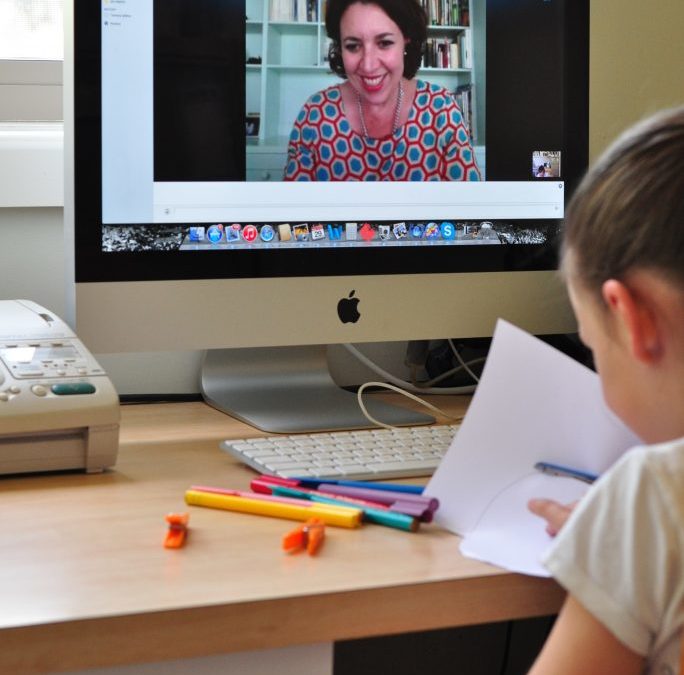Have you ever wondered what causes stuttering? From genetics to neurological structures and personal environments, many factors can contribute to stuttering. In this article, we’ll discuss the origins of stuttering, what causes stuttering and how it can be treated so that you can better understand it.
Key Takeaways
- Stuttering results from a blend of genetic predispositions, neurological patterns, and environmental stressors, impacting speech fluency, especially in males and requiring supportive environments for better management.
- Developmental stuttering typically begins between 2 and 6 years old in children and can be distinguished from normal language development by persistent day-to-day disfluencies that impact communication, requiring early intervention.
- Therapy Connect speech therapists support clients with strategies to overcome stuttering and other speech and communication challenges. We tailor programs to each client, using proven techniques and tools.
Exploring the Causes of Stuttering
Stuttering can be influenced by a combination of factors, including genetics, neurological conditions, and environmental stressors. Each plays a unique role in the occurrence and persistence of this speech disorder. By understanding these contributing factors, we can better comprehend the complexity of stuttering and how it affects individuals.
Neurological Basis
Neurological events like a stroke or traumatic brain injury can induce neurogenic stuttering. Brain imaging studies have found differences in brain structures between individuals who stutter and those who don’t. This suggests a distinct neurological pattern affecting speech fluency control, further supporting the neurological basis of stuttering.
Genetic Factors
Studies show that genetics can play a significant role in stuttering, especially in males.
Environmental Stressors
Environmental stressors such as anxiety and life events can trigger or worsen stuttering in adults who stutter, sometimes even leading to emotional trauma. An overly fast-paced lifestyle or changes in routine can exacerbate stuttering in individuals predisposed to the condition, which may include psychogenic stuttering. Creating a relaxed and supportive environment can be beneficial in managing stuttering.
Developmental Stuttering in Children
Developmental stuttering, the most common type of stuttering in children, disrupts the normal flow of a child’s speech. It often begins between 18 months and seven years of age, with children repeating or prolonging sounds, syllables, or words as they learn to speak. When a child stutters, it can be a sign of this developmental phase or an indication of a child’s stuttering issue.
Recognising and differentiating the symptoms from typical language abilities development is crucial for early intervention.
Onset and Progression
Developmental stuttering usually begins between the ages of 2 and 6. It is common for many children to experience normal periods of disfluency, which typically resolve in less than 6 months. These phases of disfluency are a natural part of language development. However, when these disfluencies persist beyond this period, it may indicate developmental stuttering, warranting further evaluation.
Symptoms
Children’s stuttering symptoms may include repeating sounds, the repetition or prolongation of syllables, or words. These symptoms may vary throughout the day and become more pronounced in different situations.
It’s important to note that stuttering differs from normal disfluencies as it occurs at a higher frequency and with more repetitions.
How to Differentiate Stuttering from Typical Language Development
Understanding the distinction between stuttering and typical language development in children is crucial for identifying whether a child needs help or is simply going through a normal phase of growth. Here’s how you can differentiate between the two:
Stuttering
Stuttering in kids typically aligns with significant language development phases. It’s characterised by disruptions in the flow of speech, including:
- Repetitions: Sounds, syllables, or words are repeated, making speech less fluid.
- Prolongations: A sound is elongated, creating a noticeable stretch in speech.
- Blocks: Pauses occur in speech where the child seems stuck and unable to produce the next sound.
Children who stutter may also exhibit physical signs of struggling, such as blinking, facial tensing, or fist clenching. Stuttering varies in frequency and severity and can be influenced by emotions, with children possibly stuttering more when excited, tired, or stressed. If stuttering persists beyond six months, shows consistent and pronounced signs, or causes frustration or avoidance behaviours in the child, professional evaluation by a speech pathologist is recommended.

Typical Language Development
Disfluencies, or breaks in the smooth flow of speech, are common as children develop their language skills. These might include:
- Word and Phrase Repetitions: Repeating familiar words or phrases as they find the right words to express themselves.
- Hesitations: Pauses or filler sounds like “um” or “uh” as they gather their thoughts.
- Revisions: Changing what they are saying mid-sentence as they organise their thoughts.
These types of disfluencies are typically part of normal language development. They are often transient, appearing more during times of excitement, tiredness, or when the child is trying to convey complex ideas.
If these disfluencies are not accompanied by signs of struggle or frustration, and if they decrease over time, they’re usually considered part of normal speech and language development.
What to Do
- Observe: Monitor the child’s speech over a period to distinguish between temporary disfluencies and persistent stuttering.
- Consult: If stuttering signs are consistent and persistent, or if you are unsure, consult a speech pathologist for a professional assessment.
- Support: Provide a supportive environment that encourages speech and language development, regardless of whether the child is stuttering or experiencing normal disfluencies.
Patience and encouragement are key for children showing signs of typical language development. Avoid correcting their speech; provide clear, calm responses and model smooth speech.
Identifying and Diagnosing Stuttering
Identifying and diagnosing stuttering is a comprehensive process involving a detailed case history, symptom assessment, and referral to a speech-language pathologist. This process is crucial in understanding the nature of the disorder and formulating an effective treatment plan.
Family History and Symptom Assessment
Family history plays a vital role in diagnosing stuttering. A detailed case history helps determine the risk of ongoing stuttering in young children. Symptom assessment involves scrutinising the following:
- The individual’s stuttering behaviours
- The onset and circumstances under which stuttering was first noticed
- The impact of stuttering on the individual’s life
Referral to a Speech Pathologist
Speech pathologists use multiple methods to assess speech challenges and create a program to support clients in overcoming speech challenges.
Get Professional Support to Alleviate Stuttering with Therapy Connect
Navigating the stuttering and speech therapy journey can be challenging, but you’re not alone. Our expert, personalised speech therapy services are designed to help your child overcome this challenge and improve communication skills.
Our experienced speech pathologists use innovative strategies tailored to your child’s individual needs and goals, so they can progress at their own pace. With Therapy Connect, you can experience the convenience and effectiveness of online therapy while empowering yourself to communicate clearly and confidently. So whether you need help with stuttering, articulation, or other speech challenges, our personalised approach has covered you.
Schedule your consultation today!
Benefits of Choosing Therapy Connect Speech Therapy
- Personalised Programs: Tailored therapy that aligns with your ward’s individual goals and preferences.
- Convenience: Access to expert speech therapists anywhere in Australia saves you travel time and costs.
- NDIS Funded: Our services are 100% funded by the NDIS, ensuring accessible support for all.
- Expertise: Work with highly qualified and experienced therapists specialising in various speech and language challenges.
- Innovative Online Platform: Engage in therapy through a user-friendly, secure online platform.
- Comprehensive Support: From verbal and non-verbal communication to swallowing safety, we cover all aspects of speech therapy.
- Community and Family Engagement: We collaborate with you to foster a holistic approach to improvement.
Transform your child’s communication journey with Therapy Connect today. Let us empower them to live their best life through effective, personalised speech therapy. Book your consultation today!
Managing Stuttering in Everyday Life
Stuttering can be a challenge for kids, but with your support and the right strategies, they can become more comfortable and confident in their speech. Here’s how you can help:
Build Confidence
- Give your child time to say what they’re trying to say. Wait and be patient.
- Encourage your child to talk about their interests; passion makes speaking easier.
- Practise difficult words together, turning it into a fun game.
- Consider enrolling in activities like drama or speaking clubs to boost speaking skills and confidence.
By adopting these strategies, you can help maintain the flow of conversation for your child and make speaking a less stressful experience. Remember, your support and understanding are key to their progress and confidence.
Frequently Asked Questions
What are the causes of stuttering?
Stuttering is believed to have a neurological basis, affecting areas of the brain that control speech and language processing. It can also have a genetic cause, as it may run in families.
Does stuttering go away?
Stuttering might disappear and then reappear in young children and for many, it will disappear altogether.
Is stuttering a brain problem?
Stuttering can be associated with differences in certain brain areas that control speaking muscles or muscle coordination, indicating it is a brain problem.
Final Thoughts
Stuttering is a multifaceted condition that requires a comprehensive approach for effective management and treatment. Understanding the genetic, neurological, and environmental factors that contribute to stuttering can empower individuals and families to seek the appropriate support and interventions.
Early identification and tailored treatment strategies with speech therapy play a critical role in improving speech fluency and overall quality of life for those affected. Contact us at Therapy Connect today to access expert speech therapy tailored to your child’s unique needs. Our dedicated team is committed to supporting families and children in overcoming stuttering challenges. Get help today!




